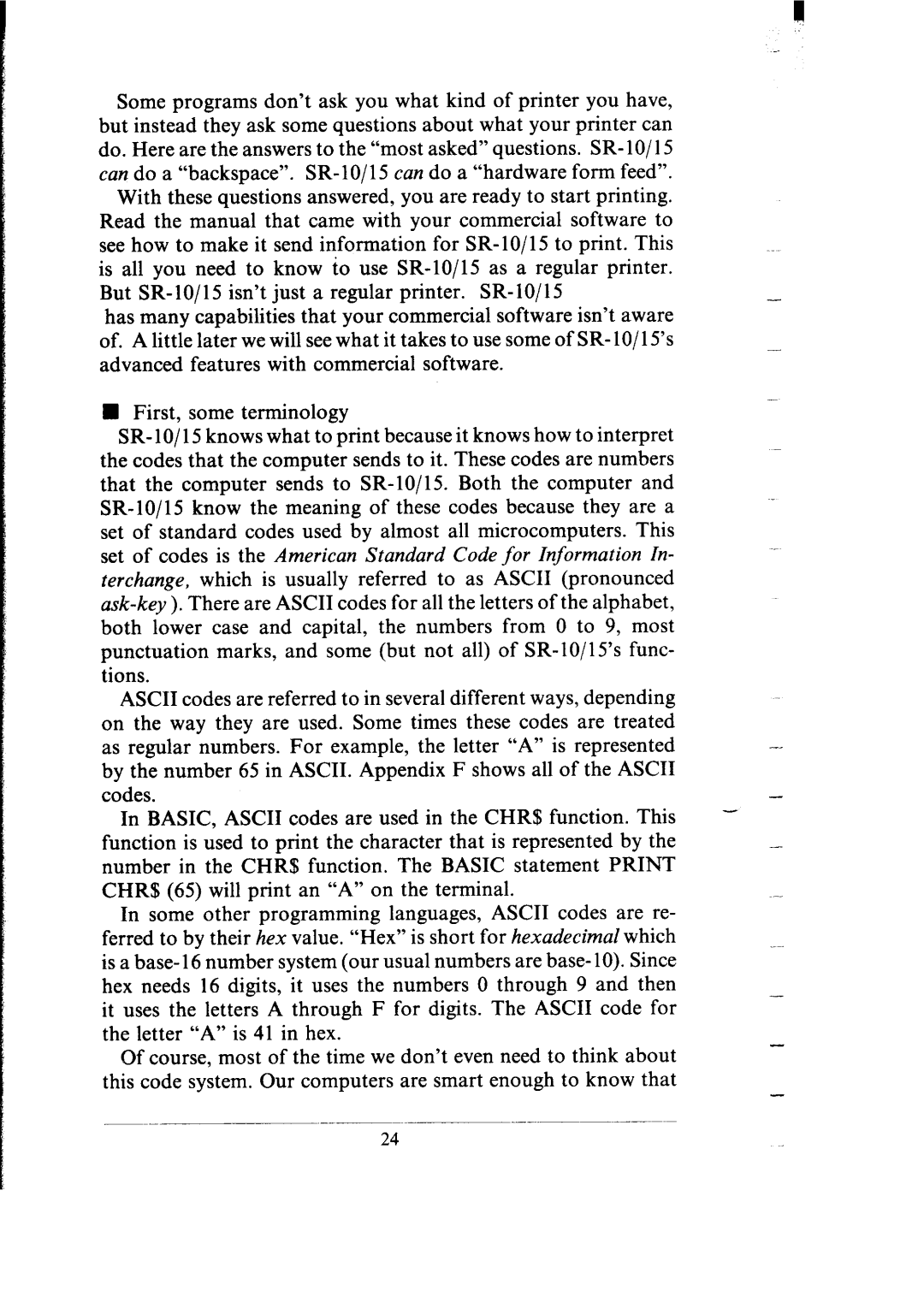
Some programs don’t ask you what kind of printer you have, but instead they ask some questions about what your printer can do. Here are the answers to the “most asked” questions.
With these questions answered, you are ready to start printing. Read the manual that came with your commercial software to see how to make it send information for
has many capabilities that your commercial software isn’t aware of. A little later we will see what it takes to use some of SR- lo/ 15’s advanced features with commercial software.
nFirst, some terminology
SR- 1O/15 knows what to print because it knows how to interpret the codes that the computer sends to it. These codes are numbers that the computer sends to
set of standard codes used by almost all microcomputers. This set of codes is the American Standard Code for Information In- terchange, which is usually referred to as ASCII (pronounced
ASCII codes are referred to in several different ways, depending on the way they are used. Some times these codes are treated as regular numbers. For example, the letter “A” is represented by the number 65 in ASCII. Appendix F shows all of the ASCII codes.
In BASIC, ASCII codes are used in the CHR$ function. This function is used to print the character that is represented by the number in the CHR$ function. The BASIC statement PRINT CHR$ (65) will print an “A” on the terminal.
In some other programming languages, ASCII codes are re- ferred to by their hex value. “Hex” is short for hexadecimal which is a base- 16 number system (our usual numbers are base- 10). Since hex needs 16 digits, it uses the numbers 0 through 9 and then it uses the letters A through F for digits. The ASCII code for the letter “A” is 41 in hex.
Of course, most of the time we don’t even need to think about this code system. Our computers are smart enough to know that
24
